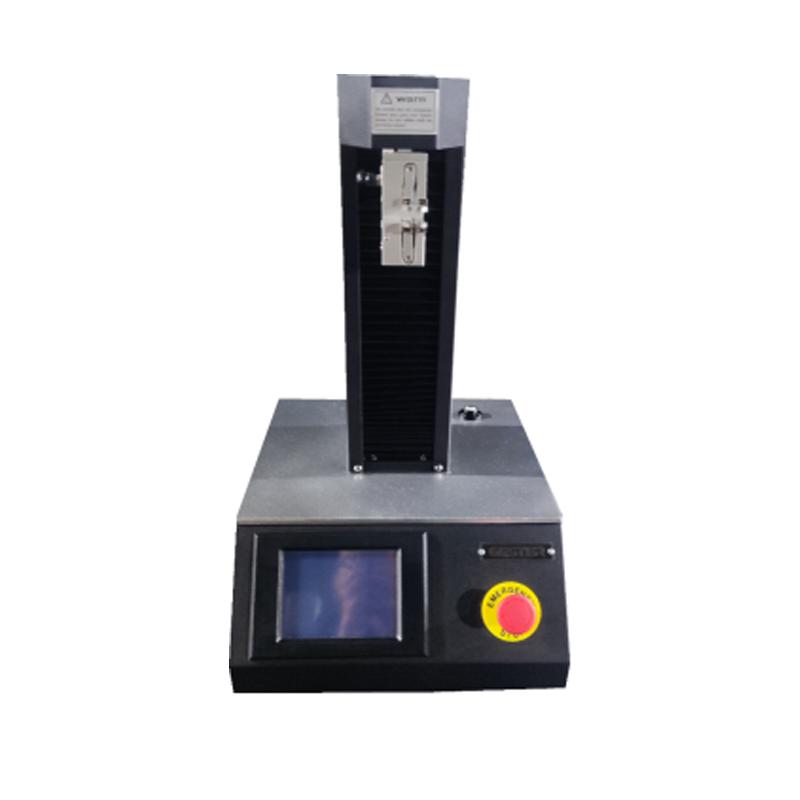Methods fibre testing equipment helps data integrity
All You Need to Learn About Robotic Vision and Its Applications in Advanced Optical Measurement Systems
Robotic vision represents a considerable advancement in the junction of computer system vision, synthetic knowledge, and machine knowing. This innovation boosts the precision of optical measurement systems, making it possible for real-time data evaluation and boosted quality control. Its influence extends multiple industries, from manufacturing to healthcare. The advancing landscape of robot vision raises inquiries regarding future capacities and applications. What developments exist in advance in this transformative field?
Recognizing Robotic Vision: Trick Concepts and Technologies
Robotic vision includes the innovations and approaches that allow machines to interpret and comprehend aesthetic information from their environment. This field combines components of computer system vision, man-made knowledge, and machine understanding to facilitate automated decision-making based upon visual information. Key principles consist of image handling, which involves the improvement and evaluation of pictures to remove meaningful features, and object acknowledgment, which allows equipments to identify and identify items within a scene.

The Combination of Robotic Vision With Optical Dimension Solutions
As sectors significantly require precision and performance, the combination of robot vision with optical dimension systems has become a transformative strategy. This synergy allows robots to perceive and translate their environments, enhancing the capability of optical measurement systems to examine and analyze items with exceptional precision. By equipping optical sensing units with innovative imaging modern technologies, robotic vision enables real-time information collection and processing, assisting in instant adjustments to measurement parameters.
The mix encourages automated systems to identify variations in dimensions, surface area top quality, and positioning, which are essential in high quality control procedures. Improved formulas, such as artificial intelligence, further increase this integration by enhancing the systems' capability to adjust to different settings and situations. Consequently, the combination not just simplifies dimension processes however also minimizes errors, making certain that items satisfy rigid market standards, thereby solidifying the role of robot vision in the future of optical dimension systems.
Applications of Robotic Vision in Production
In modern production environments, the use of vision systems has transformed manufacturing procedures by making it possible for devices to do tasks with impressive precision and rate. Robotic vision systems are progressively utilized for top quality control, where they examine products for defects and guarantee adherence to specifications. These systems make use of cameras and advanced algorithms to examine items in real-time, significantly decreasing the danger of human error.
Furthermore, robotic vision facilitates automation in assembly lines, allowing robotics to accurately recognize components and assemble them with very little downtime. This modern technology also boosts stock monitoring, as vision systems can keep track of stock levels and discover inconsistencies, guaranteeing a smooth supply Going Here chain.
Robotic vision help in the execution of wise factories, where data from vision systems can be integrated with other technologies to maximize process (robotic vision). Overall, the applications of robot vision in producing show its vital function in improving efficiency, quality, and efficiency across numerous markets
Robotic Vision in Healthcare: Changing Client Treatment

In recovery, robot vision help in keeping an eye on patient progress and customizing therapy sessions to private needs. It supports doctor by automating jobs such as data collection and individual monitoring, enabling for even more time to concentrate on direct person interaction. Additionally, robot vision improves telemedicine by allowing remote diagnosis and digital assessments, connecting the void between patients and doctor. Generally, the application of robotic vision in medical care is changing client care, resulting in improved end results, effectiveness, and patient complete satisfaction.
Future Trends and Advancements in Robotic Vision Technology
The fast advancement of robot vision modern technology promises to even more enhance its applications throughout numerous fields, including healthcare. Future trends suggest a significant change in the direction of integrating synthetic knowledge and artificial intelligence, pop over to this web-site allowing systems to find out from huge datasets and improve precision over time. Enhanced sensor technologies and deep learning algorithms are expected to improve object recognition capacities, allowing robots to analyze complex atmospheres better.

The assimilation of augmented fact (AR) with robot vision will likely reinvent how robots assist in medical treatments and diagnostics. This synergy will certainly promote real-time information visualization, boosting decision-making procedures. Additionally, miniaturization of components will result in more compact and versatile robotic vision systems ideal for a variety of tasks. As these advancements unfold, industries will witness raised automation and efficiency, strengthening robotic vision as a cornerstone of cutting-edge technological solutions.
Frequently Asked Questions
What Are the Key Elements of a Robot Vision System?
The primary elements of a robot vision system consist of video cameras for photo capture, processors for information analysis, formulas for analysis, and actuators for motion. With each other, these aspects enable robots to regard and communicate with their atmosphere successfully.
Exactly How Does Robotic Vision Improve Accuracy in Measurements?
Robotic vision improves dimension accuracy by using innovative imaging technologies, making it possible for specific item discovery and spatial evaluation. This capacity decreases human mistake, raises repeatability, and permits real-time modifications, eventually enhancing total dimension dependability and effectiveness.
What Industries Advantage A Lot Of From Robotic Vision Technology?
Different markets profit substantially from robotic vision modern technology, including manufacturing, medical care, farming, and logistics. These markets make use of enhanced precision, performance, and automation, resulting in boosted productivity and minimized functional expenses in their respective processes.
Can Robotic Vision Equipments Job in Low-Light Issues?
Robotic vision systems can certainly work in low-light problems, utilizing advanced sensors and algorithms to boost photo clearness. This ability allows them to visit this page execute successfully in different environments, including commercial and surveillance applications, even with very little lighting.
What Are the Prices Connected With Carrying Out Robotic Vision?
The expenses connected with executing robotic vision vary substantially, influenced by components such as video cameras, software program, and integration. Extra costs include maintenance, training personnel, and prospective upgrades to existing systems, which can build up over time.